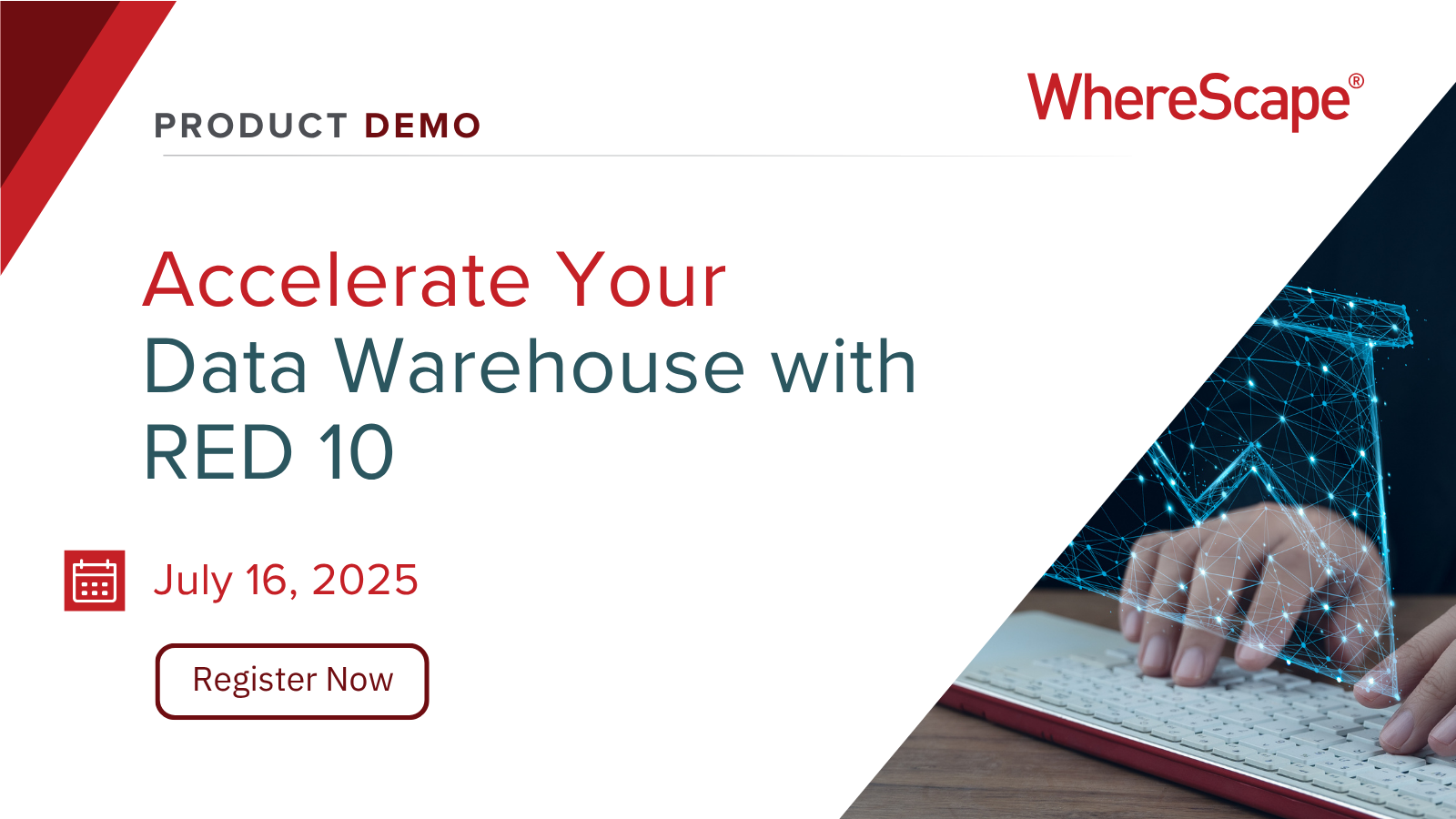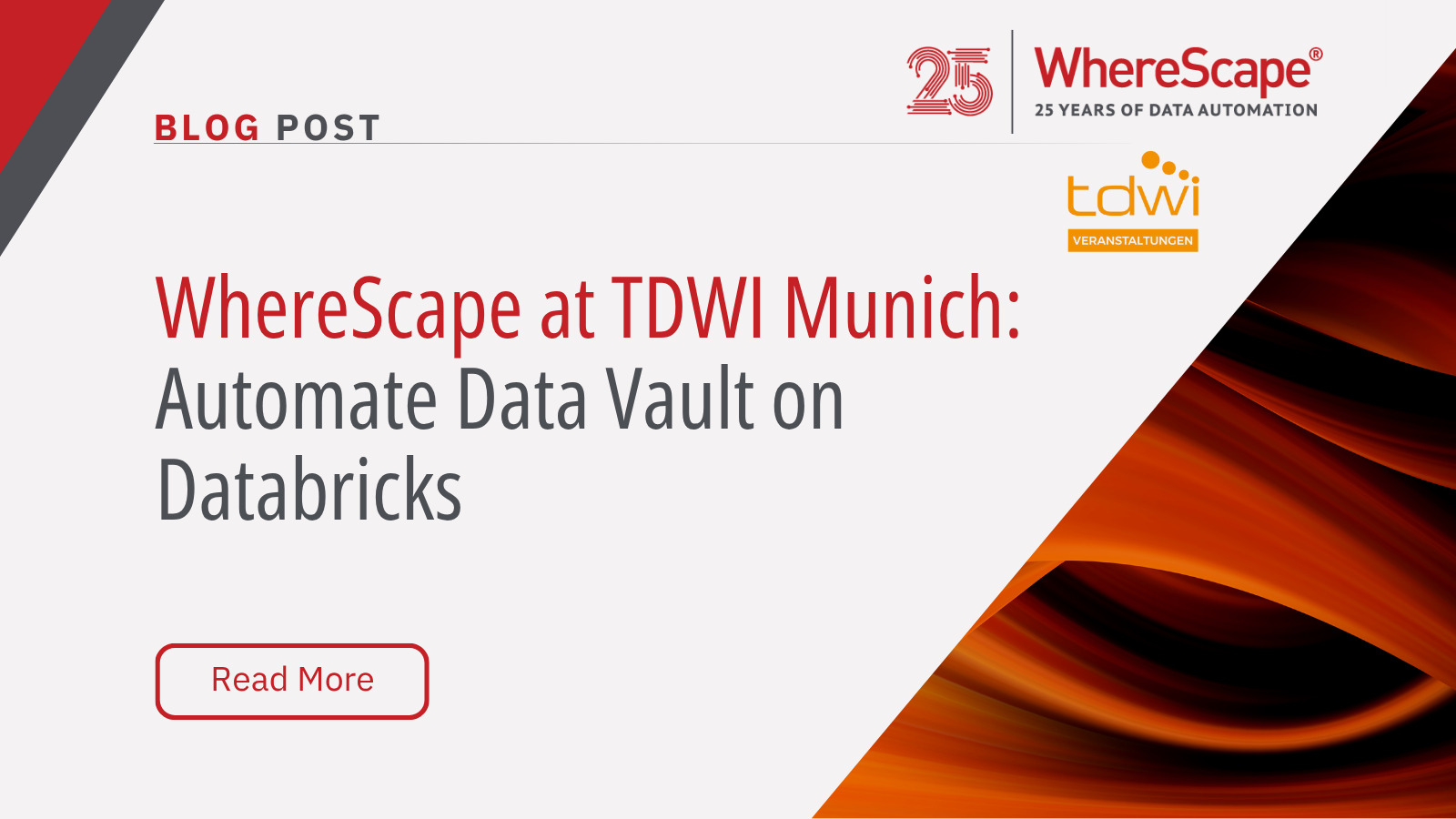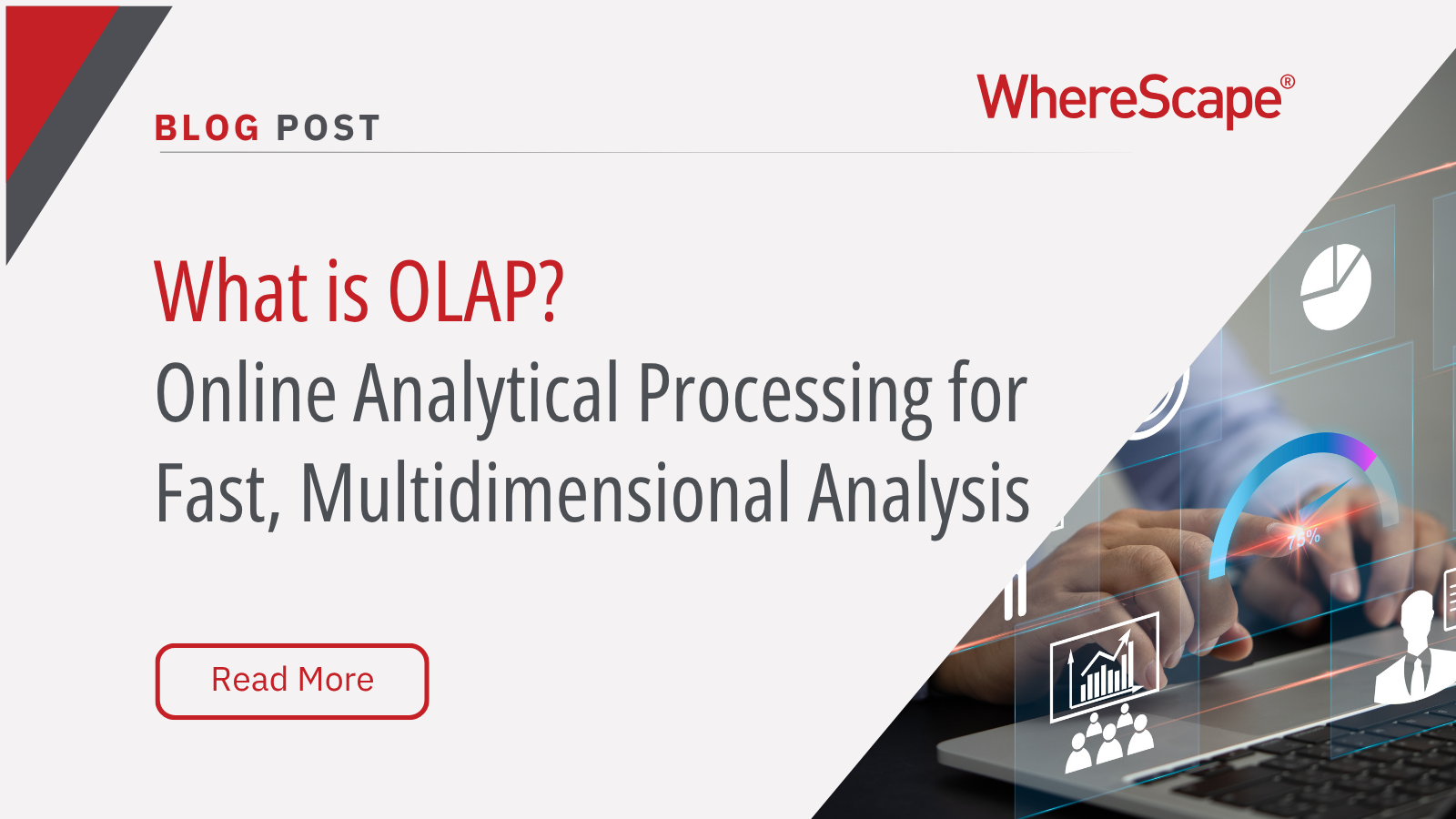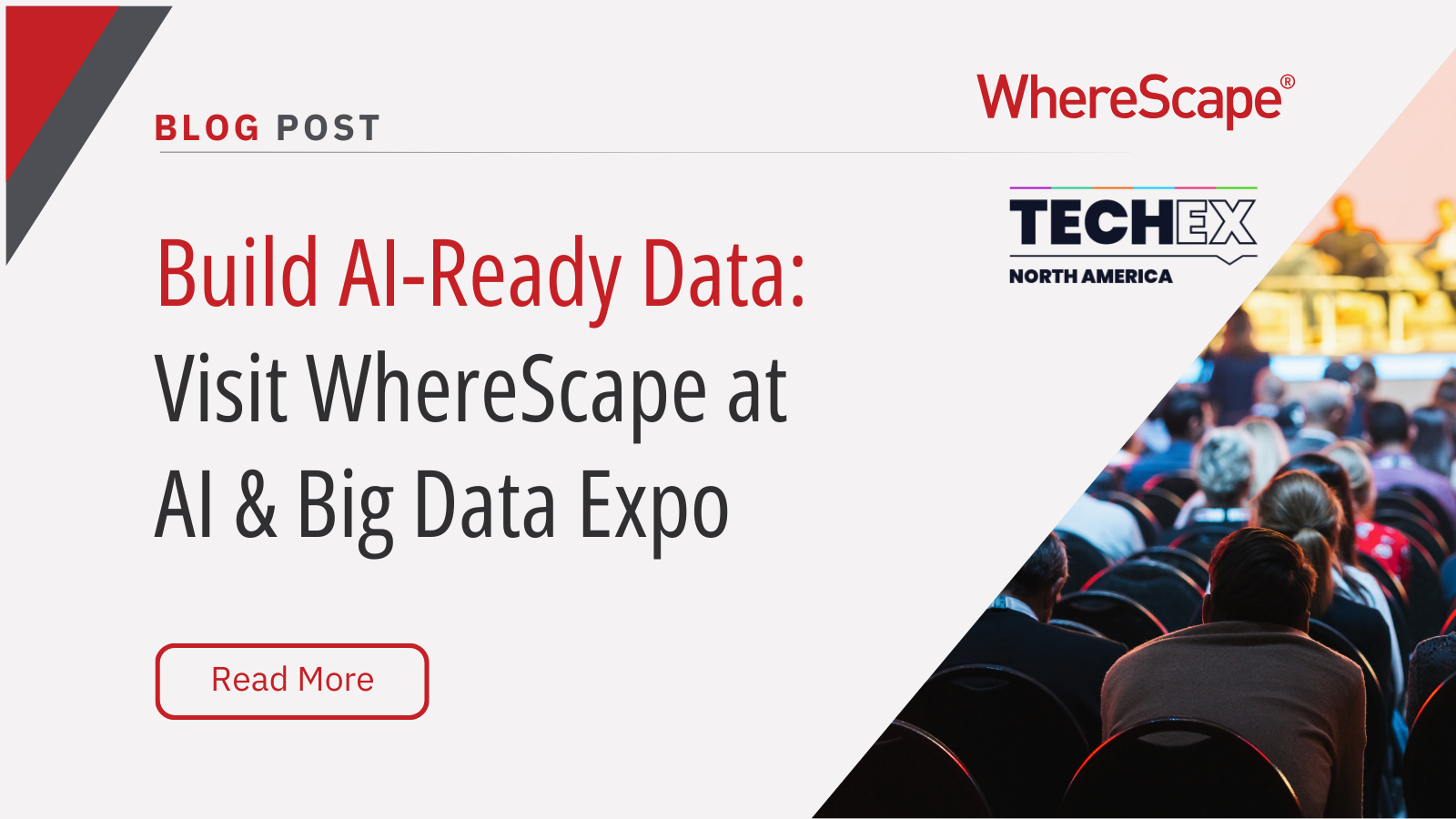Tune in for a free, live virtual hands-on lab...
Gartner’s Report on Data Hubs, Lakes & Warehouses Highlights Knowledge Gap for Data Managers

Gartner’s paper, Data Hubs, Data Lakes and Data Warehouses: How They Are Different and Why They Are Better Together, serves as much as a cautionary piece as an informative one. Based on inquiries made to the analyst firm over the past few years, is it apparent that a real gap in knowledge exists when it comes to what these three data structures do and how they should be employed.
“For example, while Gartner client inquiries referring to data hubs increased by 20% from 2018 through 2019, more than 25% of these inquiries were actually about data lake concepts.” (Data Hubs, Data Lakes and Data Warehouses: How They Are Different and Why They Are Better Together by Ted Friedman, Nick Heudecker.)
At the time of the report’s publication in 2020, the percentage of companies using data hubs, lakes and warehouses looked like this:
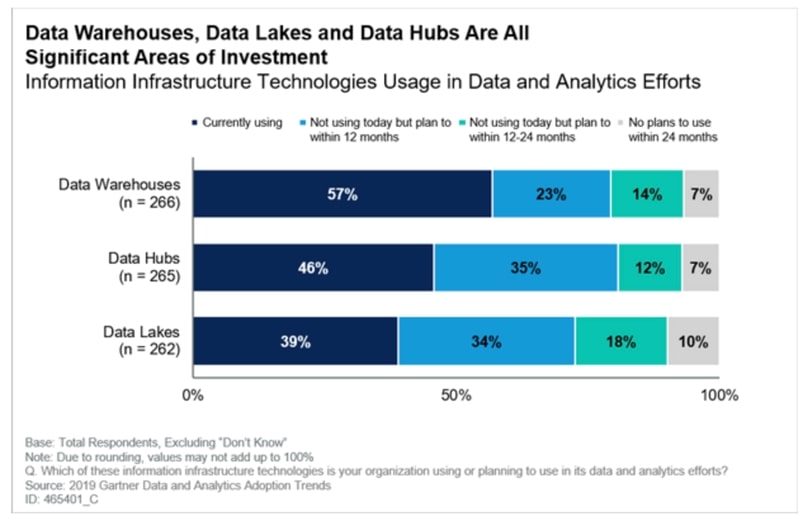
With many companies using all three of these structures already, it’s no exaggeration to say how well companies can understand and harness the potential of data lakes, warehouses and hubs can and will shape their success. This explains the urgency underlying this piece; at present, huge investments are being made by many people who either do not fully understand what each of these three entities does alone and/or how they can be combined most effectively.
How Data Warehouses, Lakes and Hubs Work
Data Warehouses should be used for the analysis of structured data, Data Lakes for analysis of unstructured or semi-structured data, and Data Hubs for communicating the resultant BI to the people who need to act on it. However, many mistakenly think that these three entities do the same thing in different ways, and so are interchangeable. It’s important that business leaders not only understand this for themselves but communicate it throughout the company to democratize the use of data.
Data Lakes and the exploratory technologies that unstructured big data enables are only as useful as your company’s ability to assimilate their findings into a structured environment. This is where the Data Warehouse takes over: a Data Lake can be added as a source to a Data Warehouse, and its data blended with other real-time and batch sources to provide rich, contextualized business insight. Read more on Data Lakehouses here.
Of the three structures, it is ironic that the one managers need to know best is the least understood. The Data Hub is where BI is not only shared but is also available for governance by those responsible for it. As its name suggests a hub also “enables data flow between diverse endpoints”
One of the main recommendations of Gartner’s report is to: “Maximize your ability to support a broader range of diverse use cases by identifying the ways that these structures can be used in combination. For example, data can be delivered to analytic structures (Data Warehouses and Data Lakes) using a Data Hub as a point of mediation and governance.” (Data Hubs, Data Lakes and Data Warehouses: How They Are Different and Why They Are Better Together by Ted Friedman, Nick Heudecker.)
Dealing with Disruption
The report also highlights the need to be agile in how your company can ingest new data from various sources in different formats. Those that can, are able to adapt to disruption and monetize it before their competitors. This supports the use of both a Data Warehouse and lake in conjunction as part of a logical Data Warehouse, and also of an end-to-end automated infrastructure to manage and change it quickly as needed.
While the exponential growth of data makes more insight available, it also means the infrastructure that stores and analyses it becomes necessarily more complex. This infrastructure needs to adapt as new demands emerge (constantly) and as data sources evolve (periodically). It’s a fallacy to think we can create the ultimate data infrastructure that won’t need to be changed.
The Dangers of Ambiguity
Perhaps by reading this piece, data leaders can iron out any ambiguity and potentially make their companies more successful. Misunderstanding also has internal implications in that expectations and reality can be quite different if those leading the data department have different definitions of certain infrastructure than those building and using it day-to-day.
The report is vital reading for data leaders who have even a hint of doubt in their minds of the purpose and role of the Data Warehouse, lake or hub. It could mean the difference between a successful data project, or a failed one in which the roles of the various technologies and staff are not clearly defined.
WhereScape at TDWI Munich: Automate Data Vault on Databricks
WhereScape at TDWI Munich 2025: Automate a Full Data Vault on Databricks in Just 45 Minutes June 24–26, 2025 | MOC Munich, Germany As data complexity grows and business demands accelerate, scalable and governed data architectures are no longer optional—they're...
What Is OLAP? Online Analytical Processing for Fast, Multidimensional Analysis
Streamline your data analysis process with OLAP for better business intelligence. Explore the advantages of Online Analytical Processing (OLAP) now! Do you find it challenging to analyze large volumes of data swiftly? A Forrester study reveals that data teams spend...
Build AI-Ready Data: Visit WhereScape at AI & Big Data Expo
June 4–5, 2025 | Booth 202 | Santa Clara Convention Center As organizations scale their artificial intelligence and analytics capabilities, the demand for timely, accurate, governed, and AI-ready data has become a strategic priority. According to Gartner, through...
Automating Star Schemas in Microsoft Fabric: A Webinar Recap
From Data Discovery to Deployment—All in One Workflow According to Gartner, data professionals dedicate more than half of their time, 56%, to operational tasks, leaving only 22% for strategic work that drives innovation. This imbalance is especially apparent when...
What is a Data Model? How Structured Data Drives AI Success
What is a data model? According to the 2020 State of Data Science report by Anaconda, data scientists spend about 45% of their time on data preparation tasks, including cleaning and loading data. Without well-structured data, even the most advanced AI systems can...
ETL vs ELT: What are the Differences?
In working with hundreds of data teams through WhereScape’s automation platform, we’ve seen this debate evolve as businesses modernize their infrastructure. Each method, ETL vs ELT, offers a unique pathway for transferring raw data into a warehouse, where it can be...
Dimensional Modeling for Machine Learning
Kimball’s dimensional modeling continues to play a critical role in machine learning and data science outcomes, as outlined in the Kimball Group’s 10 Essential Rules of Dimensional Modeling, a framework still widely applied in modern data workflows. In a recent...
Automating Data Vault in Databricks | WhereScape Recap
Automating Data Vault in Databricks can reduce time-to-value by up to 70%—and that’s why we hosted a recent WhereScape webinar to show exactly how. At WhereScape, modern data teams shouldn't have to choose between agility and governance. That's why we hosted a live...
WhereScape Recap: Highlights From Big Data & AI World London 2025
Big Data & AI World London 2025 brought together thousands of data and AI professionals at ExCeL London—and WhereScape was right in the middle of the action. With automation taking center stage across the industry, it was no surprise that our booth and sessions...
Why WhereScape is the Leading Solution for Healthcare Data Automation
Optimizing Healthcare Data Management with Automation Healthcare organizations manage vast amounts of medical data across EHR systems, billing platforms, clinical research, and operational analytics. However, healthcare data integration remains a challenge due to...
Related Content
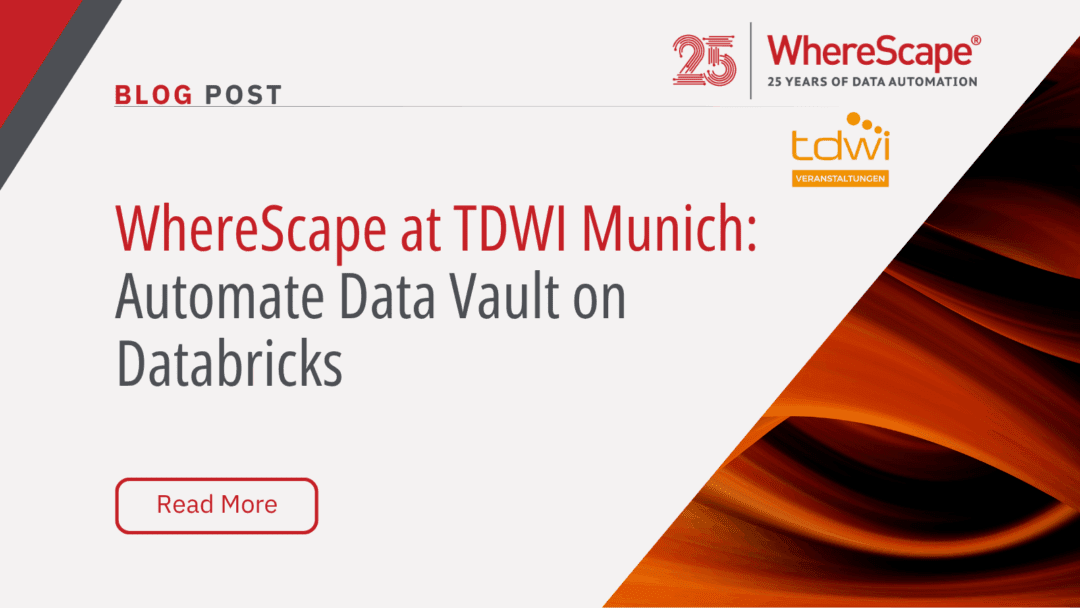
WhereScape at TDWI Munich: Automate Data Vault on Databricks
WhereScape at TDWI Munich 2025: Automate a Full Data Vault on Databricks in Just 45 Minutes June 24–26, 2025 | MOC Munich, Germany As data complexity grows and business demands accelerate, scalable and governed data architectures are no longer optional—they're...
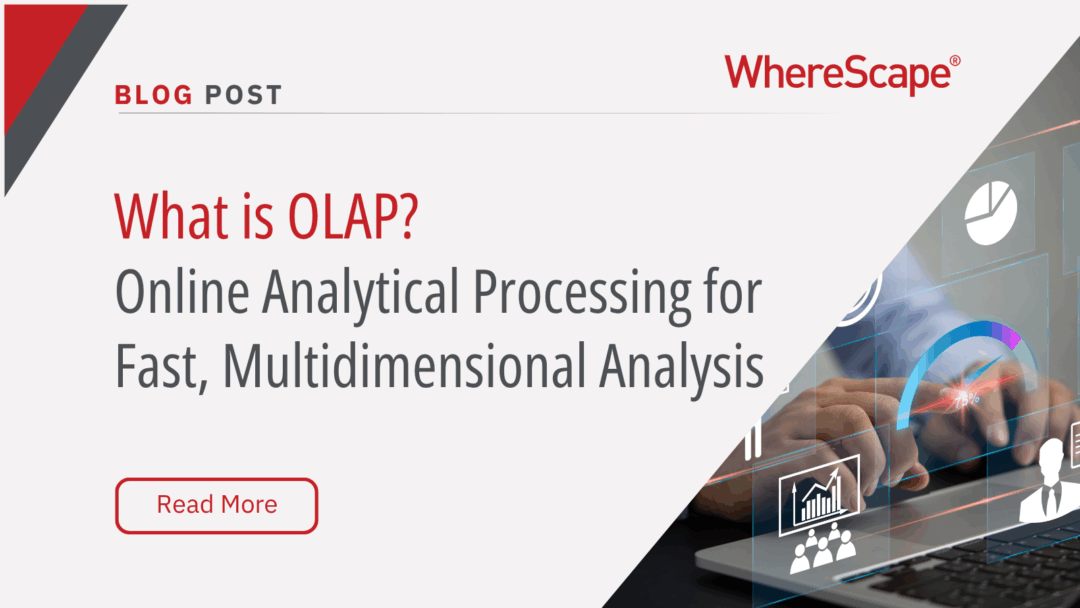
What Is OLAP? Online Analytical Processing for Fast, Multidimensional Analysis
Streamline your data analysis process with OLAP for better business intelligence. Explore the advantages of Online Analytical Processing (OLAP) now! Do you find it challenging to analyze large volumes of data swiftly? A Forrester study reveals that data teams spend...
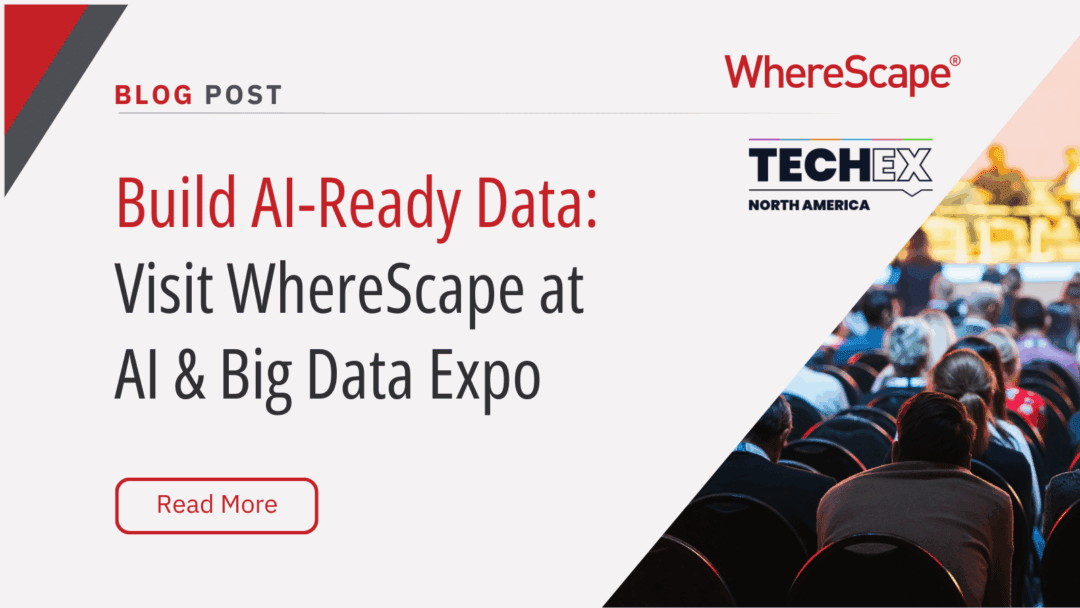
Build AI-Ready Data: Visit WhereScape at AI & Big Data Expo
June 4–5, 2025 | Booth 202 | Santa Clara Convention Center As organizations scale their artificial intelligence and analytics capabilities, the demand for timely, accurate, governed, and AI-ready data has become a strategic priority. According to Gartner, through...
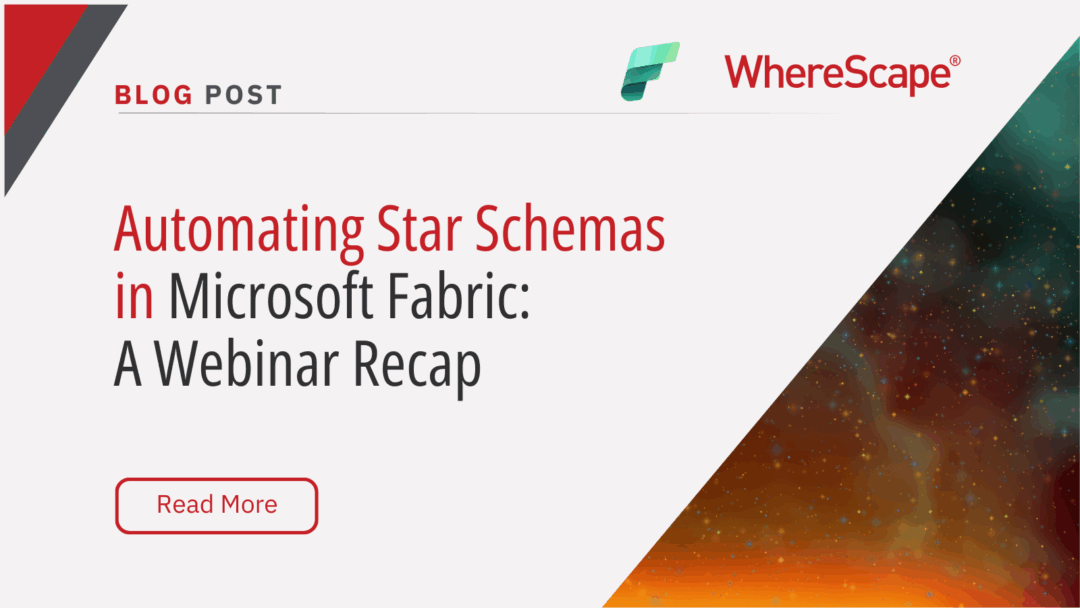
Automating Star Schemas in Microsoft Fabric: A Webinar Recap
From Data Discovery to Deployment—All in One Workflow According to Gartner, data professionals dedicate more than half of their time, 56%, to operational tasks, leaving only 22% for strategic work that drives innovation. This imbalance is especially apparent when...

